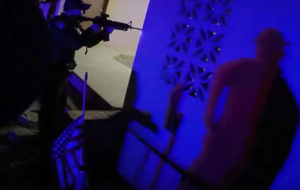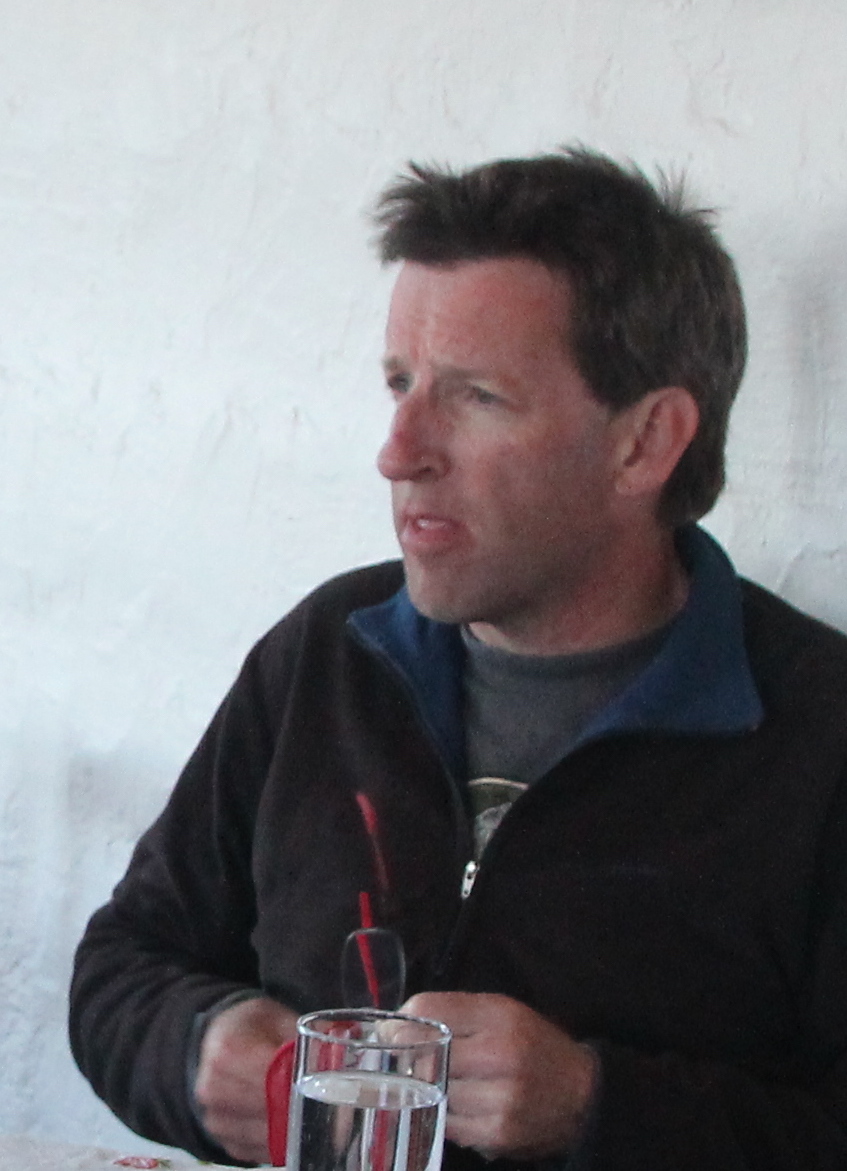 We were away when the shooting happened. We were perhaps listening to Annette McGivney read from her fine new book about a murder in Havasu Canyon, Pure Land or hearing Four Cornered Room play sweet melodies or watching a funny feminist-liberation scene from the Flagstaff Shakespeare Festival’s production of The Merry Wives of Windsor.
We were away when the shooting happened. We were perhaps listening to Annette McGivney read from her fine new book about a murder in Havasu Canyon, Pure Land or hearing Four Cornered Room play sweet melodies or watching a funny feminist-liberation scene from the Flagstaff Shakespeare Festival’s production of The Merry Wives of Windsor.
It was lively at the Viola Awards showcase, an empowering celebration of the arts in Flagstaff. Fans of rock, of drama, of the visual arts all mingled, viscerally demonstrating how involvement with the arts builds on itself. The city grows stronger, we all grow stronger, because those who first particularly appreciate a single band or a painting, grow more likely to themselves participate in the arts in other ways. The miracle of community happens when many give, and then everyone comes away with more than they put in. It’s the classic element of a virtuous cycle, one that brings huge benefits to Flagstaff. Some of them you can count in dollars, many others not.
It was lively back home, too, but in a very different way. Red and blue lights washed across the facades of our neighbors’ houses. I walked up the block to the cross street: blocked off by police cars. What had happened? There was no sign of fire, and the police were too far from the tracks for it to have been a train accident. Maybe a car crash? A car pulled up. The nearest cop signaled that the driver needed to turn around.
I walked through the yard to the alley. There was a cop at our flimsy gate. They’d strung a line of crime-scene tape across the alley. Up at the small apartment complex on the corner more officers milled about with flashlights. A radio crackled.
“What happened?” I asked.
The cop waited a bit before answering. “It’s safe now.” He paused. “A guy was shooting a gun. But you’re safe now.”
I took this in. I’d never thought to feel unsafe. “So he’s in custody?”
Another pause. “He’s out . . . he’s no threat. It’s safe.” He seemed reluctant to say more.
“I see,” I said, wondering if I did, but realizing that a cop was unlikely to say much more about what was clearly an active crime scene. I heard the subtext: they’d shot the guy. Was he dead or just injured? The question would not have been welcome.
It was jarring. I spend a lot of time not in the house but around it, in the yard or on the sidewalk or in the alley, pulling weeds, poking around, building stuff or breaking up cat fights or cleaning up dog poop, and what I tend to expect from the neighbors I encounter is a highly localized loquaciousness about the doings of pets, about wildlife sightings, about weather and gardens, about real estate prices, about what other neighbors might be up to. We wash ourselves in information the way an engine is bathed in a light sheen of oil, knowing at some level we need the ongoing lubrication of observations and stories—however trivial many of them are—to maintain our neighborhood community. Now, with streets blocked and a quarter-block and more taken up with the flashing lights and radio traffic and crime tape, I for the first time felt that I couldn’t just walk in. There was no way to find out more just now.
It was like suddenly being a stranger in my own neighborhood. It was a reminder of how much I take for granted, of my assumptions of safety and free movement. Here in Flagstaff, simply, I feel safe walking around—as long as I don’t get whacked by a careless driver. It’s not Syria or even inner-city Chicago—just a dry-mountain town where most people are pleasant and neighborly.
But I realize as I type this, as I realized standing there by the alley, how much my saying so is shaped by my particular position, one of privilege. My feeling of safety and of inclusion in this neighborhood is shaped in no small part by the details—namely that I am male, that I have white skin, that we in my family have enough resources to own a scrubby lot with an old house on it and that we’ve got good boots and warm clothes for the rare, coveted days of blizzard. There are plenty of people in Flagstaff, including some of our neighbors, who can’t make all those claims or even any of them. Their assumptions about What It’s Like Out There are often very different.
Later, in the paper, we found out more of what had happened, how one of the apartment renters, 78-year-old John Hamilton, had a very bad evening. He was frail and elderly and alone and appeared to be suffering from dementia or delusions. Unable to find his pickup keys, he’d gone to rail against a neighbor, brandishing a handgun. Bad idea, as was the idea to not drop it when the police came. After a standoff, after repeated warnings, they shot him where he stood next to his truck, confused or defiant or both.
A week later there would be a school shooting, one of many that had occurred just this year. This one would be in Florida and would be notable on a national scale only because it happened to be big enough that even the president was forced to issue a statement about it and pretend publicly that something might be done. The victims would be counted, as usual, and the scale tallied next to that of other mass shootings, and the thoughts and prayers would flow almost as vigorously as the gun lobbyists’ cash. But none of them would point out that, in a community setting, guns are wedges just as surely as the arts are glue, sowing distrust rather than its opposite and exponentially raising the stakes of the sorts of disagreements and misunderstandings that people have always experienced. The presence of a gun, whether in the hands of a confused old man or a disturbed young boy, is what converts an everyday dispute into a death or many deaths.
John Hamilton’s bullet-ridden truck is gone now, towed off to who knows where. It’s too bad. Maybe someone here in Flagstaff could have made a memorial of it.

